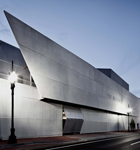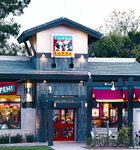1. Listen to the kids
Duke University undergraduates Justin Segall and Anthony Vitarelli are credited with building awareness back in 2003 of what could be accomplished on campus through the Duke Greening Initiative. They caught the attention of university officials through events such as a public talk by architect William McDonough, whose firm’s work in sustainability earned him a “Hero for the Planet” designation by TIME Magazine in 1999. The administration embraced the cause in part because it would attract top faculty and students, and it was consistent with an environmental sensibility advocated by several of the university’s schools.
2. Recognize a need
A drought from 2007 to 2010 in North Carolina brought into focus the critical importance and vulnerability of the university’s water resources. The regional topography affords very little retention of rainwater or snowmelt, so a lack of precipitation caused the school to turn off iconic water fountains, cease watering the university golf course, and raise temperature settings on air conditioners. With a heavily water-dependent hospital system constituting half of Duke’s built environment, the university knew it had to rethink its infrastructure.
3. Make a plan
“That was a single drought,” says Paul Manning, Duke’s director of project management. “But in reality we know it will happen again.” So, in addition to implementing such water-conservation measures as dual-flush toilets, the university developed a holistic climate master plan. “It is about more than just buildings,” Manning says. “We had to incorporate academics and student and faculty behavior to address the challenges.” The university had already begun building LEED-certified structures as early as 2004, but the new master plan was designed to encompass all existing buildings as well.
4. Close the water loop
“The lowest-hanging fruit for water conservation were the condensers and chillers,” Manning says. The campus had evolved in recent decades to incorporate air-conditioning in academic buildings because of the heat generated from increased lighting and additional computer facilities, so Duke gradually became the single largest user of water in Durham. Condensate from each building used to be released into the storm-water system, but return pipes were installed to circulate water back to the centralized chiller plant. And, since 2006, the installation of low-flow showers, waterless urinals, and storm-water cisterns for landscaping purposes has helped Duke reduce overall water use by 30 percent—during a time period in which the school has also managed to add 500,000 square feet of new buildings to its 2,000-acre campus.
5. Rein in the power
Like many campuses, Duke has switched out inefficient lighting fixtures and bulbs to significantly reduce energy use. And, a centralized control system enables better management of the overall electrical grid, as does a more aggressive incorporation of natural daylighting into campus architecture. But electricity in the region is relatively inexpensive, which makes ROI a difficult argument for choosing between renewable and fossil fuel energy sources. So, meters were installed across the campus to provide data that will enable better energy decision-making. Additionally, the university’s Office of Sustainability is testing a methane-capture program on an 8,000-head hog farm in Wilkes County, North Carolina, using a compressor and microturbine system to generate power as a fossil fuel alternative.
6. Build for the future
Duke used the LEED scorecard with the goal of achieving a Silver or better rating on all new projects, and today it’s considered one of the most sustainable schools in the country with 33 structures that are either LEED-certified or registered for certification. The university also boasts the country’s first LEED Platinum-certified residence hall, which includes the Home Depot Smart Home, described on its website as a “living laboratory focused on sustainable living and technology integration, … [incorporating] student creativity and engagement as part of education.” These ongoing results of the school’s master plan set a good example for current and future students, including those in the “Smart Home Club.” They organize events and projects that extend the reach of the program across the entire campus, helping to foster consistent engagement among generations of Duke students. ABQ



